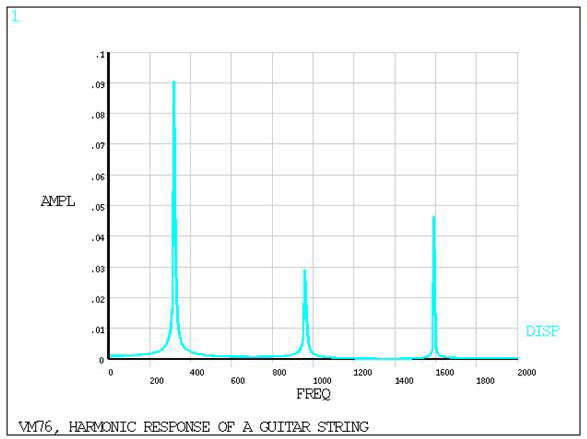VM76
VM76
Harmonic Response of a Guitar String
Test Case
A uniform stainless steel guitar string of length
 and diameter d is
stretched between two rigid supports by a tensioning force F1, which is required to tune the string to the E note
of a C scale. The string is then struck near the quarter point with
a force F2. Determine the fundamental frequency,
f1. Also, show that only the odd-numbered
frequencies produce a response at the midpoint of the string for this
excitation.
and diameter d is
stretched between two rigid supports by a tensioning force F1, which is required to tune the string to the E note
of a C scale. The string is then struck near the quarter point with
a force F2. Determine the fundamental frequency,
f1. Also, show that only the odd-numbered
frequencies produce a response at the midpoint of the string for this
excitation.
Analysis Assumptions and Modeling Notes
Enough elements are selected so that the model can be used to
adequately characterize the string dynamics. The stress stiffening
capability of the element is used. Linear perturbed harmonic analysis
determines the displacement response to the lateral force F2. The harmonic response is displayed with the time-history
postprocessor, POST26, to show the excitation of the odd-numbered
frequencies at peak displacement amplitudes. Refer to Figure 107: String Midpoint Displacement Amplitude.
and diameter d is
stretched between two rigid supports by a tensioning force F1, which is required to tune the string to the E note
of a C scale. The string is then struck near the quarter point with
a force F2. Determine the fundamental frequency,
f1. Also, show that only the odd-numbered
frequencies produce a response at the midpoint of the string for this
excitation.



